Thomas Robert
LDAdam: Adaptive Optimization from Low-Dimensional Gradient Statistics
Oct 21, 2024Abstract:We introduce LDAdam, a memory-efficient optimizer for training large models, that performs adaptive optimization steps within lower dimensional subspaces, while consistently exploring the full parameter space during training. This strategy keeps the optimizer's memory footprint to a fraction of the model size. LDAdam relies on a new projection-aware update rule for the optimizer states that allows for transitioning between subspaces, i.e., estimation of the statistics of the projected gradients. To mitigate the errors due to low-rank projection, LDAdam integrates a new generalized error feedback mechanism, which explicitly accounts for both gradient and optimizer state compression. We prove the convergence of LDAdam under standard assumptions, and show that LDAdam allows for accurate and efficient fine-tuning and pre-training of language models.
MicroAdam: Accurate Adaptive Optimization with Low Space Overhead and Provable Convergence
May 24, 2024Abstract:We propose a new variant of the Adam optimizer [Kingma and Ba, 2014] called MICROADAM that specifically minimizes memory overheads, while maintaining theoretical convergence guarantees. We achieve this by compressing the gradient information before it is fed into the optimizer state, thereby reducing its memory footprint significantly. We control the resulting compression error via a novel instance of the classical error feedback mechanism from distributed optimization [Seide et al., 2014, Alistarh et al., 2018, Karimireddy et al., 2019] in which the error correction information is itself compressed to allow for practical memory gains. We prove that the resulting approach maintains theoretical convergence guarantees competitive to those of AMSGrad, while providing good practical performance. Specifically, we show that MICROADAM can be implemented efficiently on GPUs: on both million-scale (BERT) and billion-scale (LLaMA) models, MicroAdam provides practical convergence competitive to that of the uncompressed Adam baseline, with lower memory usage and similar running time. Our code is available at https://github.com/IST-DASLab/MicroAdam.
Insights from the Future for Continual Learning
Jun 24, 2020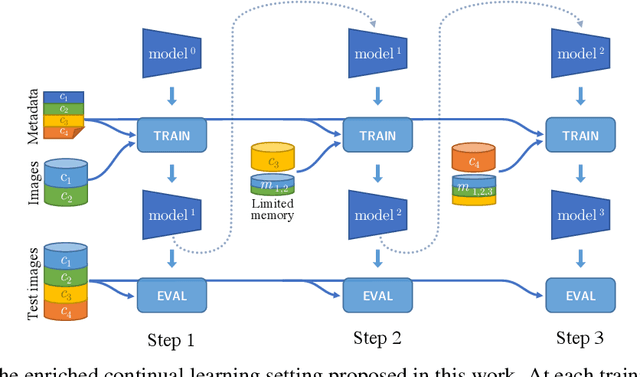



Abstract:Continual learning aims to learn tasks sequentially, with (often severe) constraints on the storage of old learning samples, without suffering from catastrophic forgetting. In this work, we propose prescient continual learning, a novel experimental setting, to incorporate existing information about the classes, prior to any training data. Usually, each task in a traditional continual learning setting evaluates the model on present and past classes, the latter with a limited number of training samples. Our setting adds future classes, with no training samples at all. We introduce Ghost Model, a representation-learning-based model for continual learning using ideas from zero-shot learning. A generative model of the representation space in concert with a careful adjustment of the losses allows us to exploit insights from future classes to constraint the spatial arrangement of the past and current classes. Quantitative results on the AwA2 and aP\&Y datasets and detailed visualizations showcase the interest of this new setting and the method we propose to address it.
Small-Task Incremental Learning
Apr 28, 2020


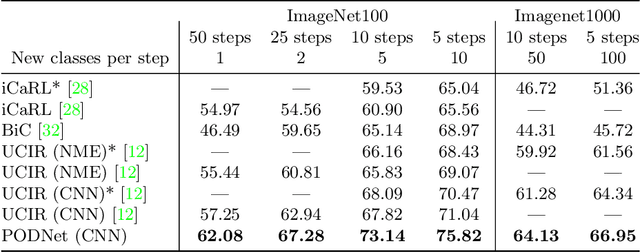
Abstract:Lifelong learning has attracted much attention, but existing works still struggle to fight catastrophic forgetting and accumulate knowledge over long stretches of incremental learning. In this work, we propose PODNet, a model inspired by representation learning. By carefully balancing the compromise between remembering the old classes and learning new ones, PODNet fights catastrophic forgetting, even over very long runs of small incremental tasks-- a setting so far unexplored by current works. PODNet innovates on existing art with an efficient spatial-based distillation-loss applied throughout the model and a representation comprising multiple proxy vectors for each class. We validate those innovations thoroughly, comparing PODNet with three state-of-the-art models on three datasets: CIFAR100, ImageNet100, and ImageNet1000. Our results showcase a significant advantage of PODNet over existing art, with accuracy gains of 12.10, 4.83, and 2.85 percentage points, respectively. Code will be released at this address: https://github.com/arthurdouillard/incremental_learning.pytorch.
DualDis: Dual-Branch Disentangling with Adversarial Learning
Jun 03, 2019



Abstract:In computer vision, disentangling techniques aim at improving latent representations of images by modeling factors of variation. In this paper, we propose DualDis, a new auto-encoder-based framework that disentangles and linearizes class and attribute information. This is achieved thanks to a two-branch architecture forcing the separation of the two kinds of information, accompanied by a decoder for image reconstruction and generation. To effectively separate the information, we propose to use a combination of regular and adversarial classifiers to guide the two branches in specializing for class and attribute information respectively. We also investigate the possibility of using semi-supervised learning for an effective disentangling even using few labels. We leverage the linearization property of the latent spaces for semantic image editing and generation of new images. We validate our approach on CelebA, Yale-B and NORB by measuring the efficiency of information separation via classification metrics, visual image manipulation and data augmentation.
HybridNet: Classification and Reconstruction Cooperation for Semi-Supervised Learning
Jul 30, 2018



Abstract:In this paper, we introduce a new model for leveraging unlabeled data to improve generalization performances of image classifiers: a two-branch encoder-decoder architecture called HybridNet. The first branch receives supervision signal and is dedicated to the extraction of invariant class-related representations. The second branch is fully unsupervised and dedicated to model information discarded by the first branch to reconstruct input data. To further support the expected behavior of our model, we propose an original training objective. It favors stability in the discriminative branch and complementarity between the learned representations in the two branches. HybridNet is able to outperform state-of-the-art results on CIFAR-10, SVHN and STL-10 in various semi-supervised settings. In addition, visualizations and ablation studies validate our contributions and the behavior of the model on both CIFAR-10 and STL-10 datasets.
SHADE: Information Based Regularization for Deep Learning
May 22, 2018



Abstract:Regularization is a big issue for training deep neural networks. In this paper, we propose a new information-theory-based regularization scheme named SHADE for SHAnnon DEcay. The originality of the approach is to define a prior based on conditional entropy, which explicitly decouples the learning of invariant representations in the regularizer and the learning of correlations between inputs and labels in the data fitting term. Our second contribution is to derive a stochastic version of the regularizer compatible with deep learning, resulting in a tractable training scheme. We empirically validate the efficiency of our approach to improve classification performances compared to common regularization schemes on several standard architectures.
SHADE: Information-Based Regularization for Deep Learning
May 14, 2018



Abstract:Regularization is a big issue for training deep neural networks. In this paper, we propose a new information-theory-based regularization scheme named SHADE for SHAnnon DEcay. The originality of the approach is to define a prior based on conditional entropy, which explicitly decouples the learning of invariant representations in the regularizer and the learning of correlations between inputs and labels in the data fitting term. Our second contribution is to derive a stochastic version of the regularizer compatible with deep learning, resulting in a tractable training scheme. We empirically validate the efficiency of our approach to improve classification performances compared to standard regularization schemes on several standard architectures.
M2CAI Workflow Challenge: Convolutional Neural Networks with Time Smoothing and Hidden Markov Model for Video Frames Classification
Dec 02, 2016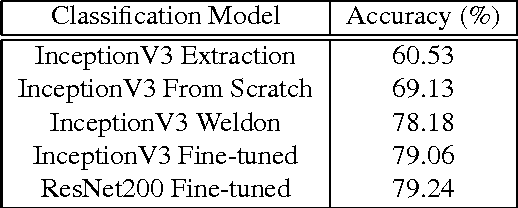
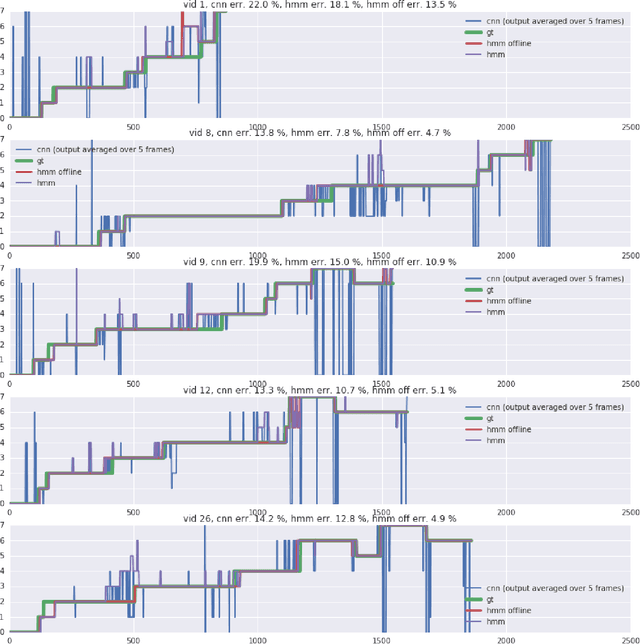

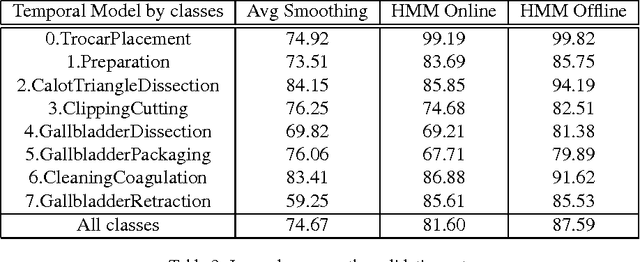
Abstract:Our approach is among the three best to tackle the M2CAI Workflow challenge. The latter consists in recognizing the operation phase for each frames of endoscopic videos. In this technical report, we compare several classification models and temporal smoothing methods. Our submitted solution is a fine tuned Residual Network-200 on 80% of the training set with temporal smoothing using simple temporal averaging of the predictions and a Hidden Markov Model modeling the sequence.
 Add to Chrome
Add to Chrome Add to Firefox
Add to Firefox Add to Edge
Add to Edge